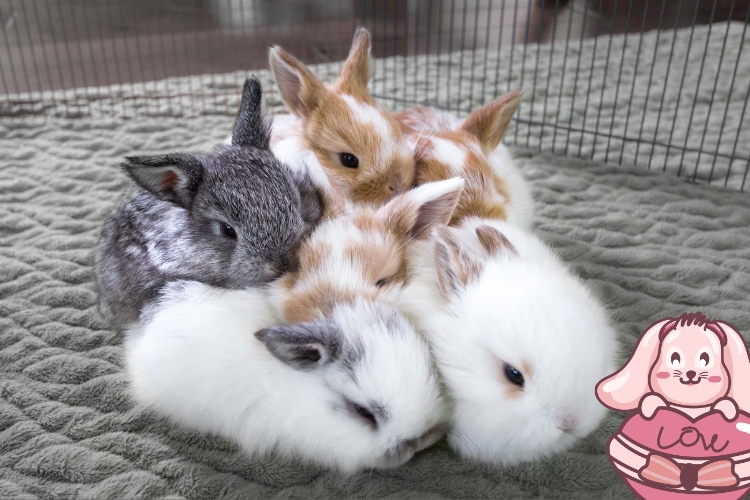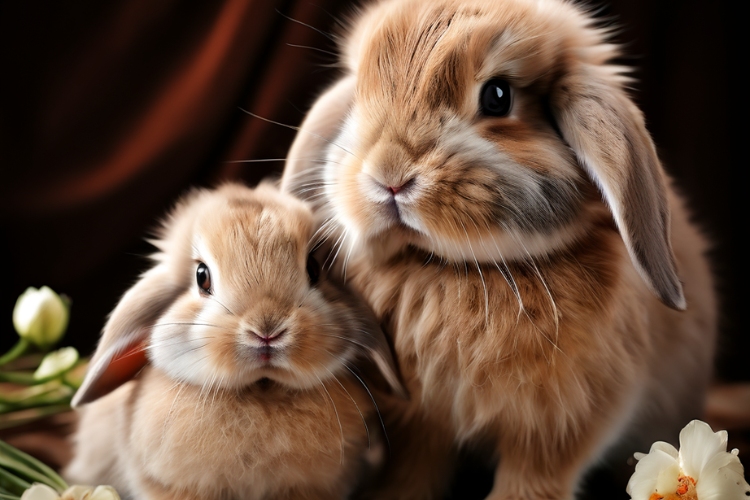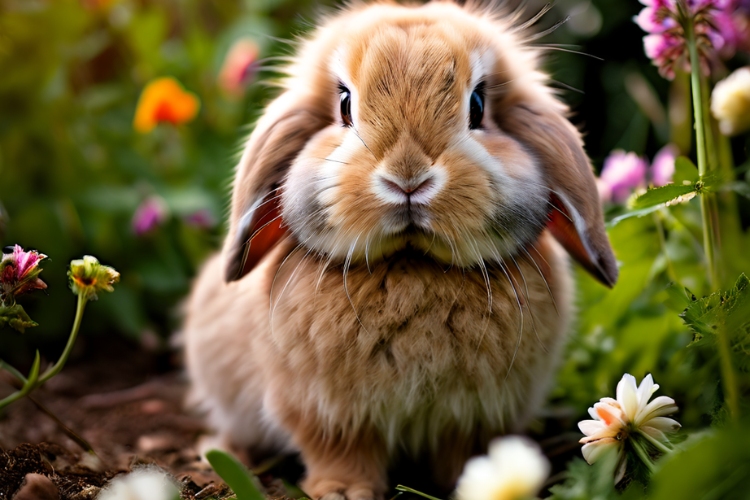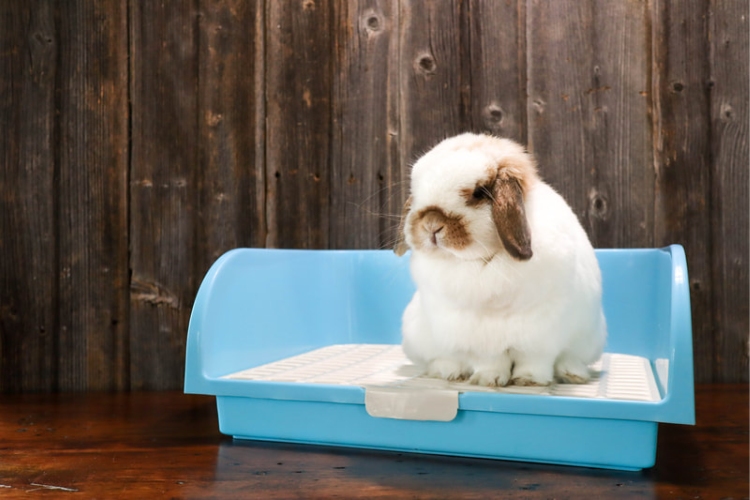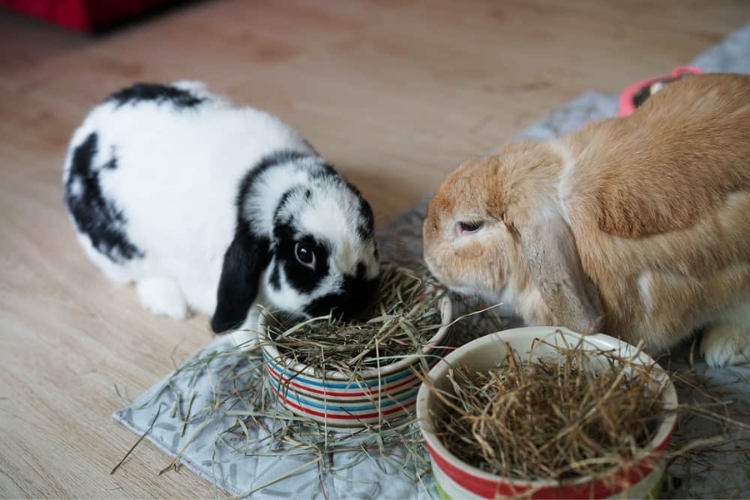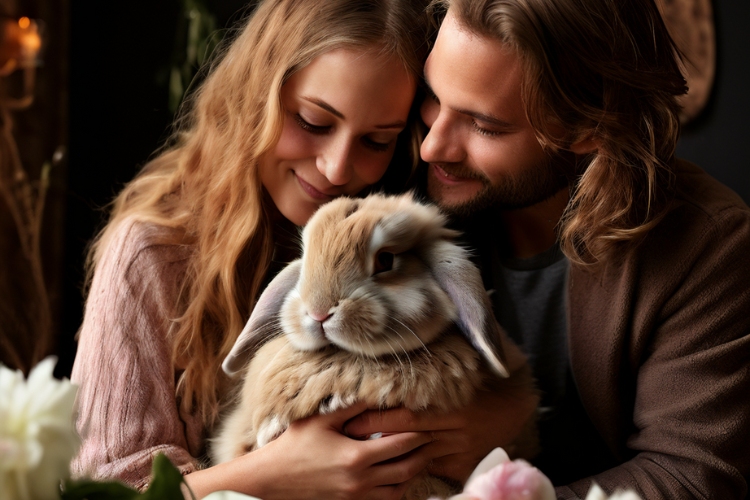The Holland Lop rabbit, with its distinctive floppy ears and compact size, is a beloved pet for many. Understanding their growth stages is essential for any owner looking to provide the best care.
From the moment they are born until they reach their senior years, Holland Lops go through a series of developmental changes that are both fascinating and critical to their well-being. Today, we will guide you through each stage of a Holland Lop’s life, highlighting the physical and behavioral milestones they achieve along the way.
Key Takeaways
- Holland Lop rabbits are known for their small size, reaching up to 4 pounds, with a well-proportioned physique and a luxurious coat.
- Newborn Holland Lops require a safe environment and proper nutrition to support their initial growth and development.
- During the juvenile stage, Holland Lops experience rapid physical changes and require socialization and regular health check-ups.
- Adolescent Holland Lops go through hormonal changes that may require diet adjustments and provide an opportunity for training and bonding.
- As senior rabbits, Holland Lops show signs of aging that necessitate adjustments in care to maintain their quality of life.
The Newborn Phase: Welcome to the World, Little One
Physical Characteristics of Newborn Holland Lops
Newborn Holland Lop rabbits, also known as kits, are born remarkably small and delicate. At birth, they typically weigh just a few ounces and are entirely dependent on their mother for warmth and nutrition.
Their eyes and ears are closed, and their fur is very fine and soft, providing minimal insulation. It’s crucial for the kits to remain in a well-constructed nest to maintain their body temperature.
The physical development of these kits is rapid. Within a few weeks, they begin to open their eyes and ears, and their fur becomes denser. A newborn Holland Lop’s body is compact, with a well-filled midsection and short, straight legs.
The ears, which will later become a defining feature, start off short and upright. It’s important to monitor the kits closely during this time, as baby rabbits that are not being fed will exhibit signs of distress, such as restlessness and a wrinkled appearance due to dehydration.
Here is a quick overview of the key physical traits of newborn Holland Lops:
- Weight: A few ounces at birth
- Eyes: Closed initially, open within 10-12 days
- Ears: Short and upright, later developing the characteristic lop
- Fur: Fine and soft, thickens with age
- Body: Compact with a well-filled midsection and short legs
Feeding and Nutrition for Optimal Growth
Proper nutrition is the cornerstone of a healthy Holland Lop rabbit, especially during the early stages of life. Newborn Holland Lops require a diet rich in maternal milk, which provides the essential nutrients for a strong start. As they grow, the transition to solid foods should be gradual and carefully monitored.
A balanced diet for a young Holland Lop should include a mix of hay, fresh vegetables, and a small amount of pellets. Hay is crucial for digestive health and should constitute the majority of their diet.
Timothy hay is particularly recommended due to its optimal fiber content and nutritional balance. Fresh vegetables introduce necessary vitamins and minerals, while pellets offer a concentrated source of nutrients.
It’s important to measure the quantity of pellets to avoid overfeeding, which can lead to weight and health issues. Below is a guideline for feeding young Holland Lops:
- Unlimited access to mother’s milk (up to 8 weeks old)
- Unlimited hay (preferably timothy or other grass hays)
- Introduce vegetables at 12 weeks (about 10% of the diet)
- Pellets should be measured (consult a vet for exact amounts)
Always ensure fresh water is available and monitor your rabbit’s health by observing their energy level and weight control.
Creating a Safe and Comfortable Environment
Ensuring your Holland Lop has a safe and comfortable environment is crucial for its well-being. Adequate housing not only provides shelter but also a space for your bunny to explore and play. When selecting an indoor rabbit cage, consider the size and design to allow for ample movement and enrichment activities.
To create a nurturing habitat, include various elements that mimic the natural habitat of rabbits. This includes areas for foraging, hiding, and resting. Here’s a simple checklist to help you set up the perfect home for your Holland Lop:
- Spacious cage or pen with easy access
- Soft bedding for comfort and warmth
- Hideouts for privacy and stress relief
- Chew toys for dental health
- Water bottle or bowl for hydration
Remember, the environment you create for your Holland Lop should evolve as they grow, ensuring it remains suitable from the newborn phase to adulthood. Regularly assess the space for safety hazards and make necessary adjustments to maintain a secure and stimulating environment.
The Juvenile Journey: Rapid Growth and Exploration
Tracking Physical Changes in Juvenile Holland Lops
As Holland Lops transition from the newborn stage, they enter the juvenile phase, which is a period of rapid growth and development.
According to Oxbow Animal Health, rabbits are considered juveniles from birth to about 12 months of age, with the adolescent period falling between 3 to 6 months. During this time, it’s crucial to monitor their size and weight to ensure they are on the right track.
Juvenile Holland Lops experience significant physical changes, including growth in size and weight. They can grow up to four pounds, and it’s essential to keep an eye on their development to prevent any health issues related to improper growth. Their ears, a distinctive feature of the breed, also continue to develop and may reach a length of up to 3.5 inches.
To help track these changes, here’s a simple table outlining the average growth milestones:
| Age (Months) | Weight (lbs) | Ear Length (inches) |
|---|---|---|
| 1 | 0.5 – 1 | 1 – 1.5 |
| 3 | 1.5 – 2 | 2 – 2.5 |
| 6 | 3 – 4 | 2.5 – 3.5 |
It’s important to note that these figures are averages and individual rabbits may vary. Regular check-ups with a veterinarian can help ensure that your Holland Lop is healthy and developing normally.
Socialization and Behavioral Development
As juvenile Holland Lops venture out of their nests, socialization becomes a pivotal aspect of their development.
Proper socialization ensures a well-adjusted rabbit, capable of interacting with humans and other rabbits without undue stress or aggression. During this stage, it’s crucial to introduce your bunny to a variety of experiences in a controlled and gentle manner.
The process of socialization involves exposing your Holland Lop to different people, animals, and environments. It’s important to remember that each rabbit is unique and will respond to these experiences in its own way. A gradual approach is key, as too much too soon can be overwhelming. Here’s a simple list to guide you through socializing your bunny:
- Introduce new people and pets slowly and calmly.
- Allow your rabbit to explore new environments under supervision.
- Encourage gentle handling by different individuals.
- Observe your rabbit’s body language and respect its comfort levels.
Behavioral development in Holland Lops is also influenced by their diet. A balance of hay, fresh vegetables, and a controlled amount of pellets is essential.
The rule of thumb for an adult rabbit is about 1/4 cup per 5 lbs. of bunny, and the pellets should be timothy based, not alfalfa, with no corn, nuts, or seeds. This diet supports not only their physical growth but also their cognitive development and overall well-being.
Health Check-ups and Preventative Care
Regular health check-ups are a cornerstone of preventative care for juvenile Holland Lops. Your vet will thoroughly examine your rabbit to determine their overall health, including a close inspection of their coat for any parasites. Preventative care can also include vaccinations and routine deworming, which are essential to keep your rabbit healthy.
Preventative health care packages can vary in cost, but investing in one can save on vet care substantially in the long run. For example, a package might cost $45.50 each month, but it provides peace of mind and financial predictability. It’s important to consider the coverage options and choose a plan that suits your rabbit’s needs.
Here are some key components of a preventative care visit:
- Wellness exams
- Vaccines
- Parasite control
- Dental checks
- Nutritional counseling
Remember, early detection of health issues can make a significant difference in the outcome for your pet. Stay proactive in your Holland Lop’s health care to ensure they lead a happy and healthy life.
Adolescence: The Teenage Transition
Understanding Hormonal Changes and Their Effects
As Holland Lop rabbits transition into adolescence, they experience significant hormonal changes that can affect their behavior and physiology. ‘
These hormonal fluctuations can lead to increased aggression, territorial marking, and even changes in appetite. It’s crucial for owners to recognize these signs and understand that they are a normal part of rabbit development.
One of the hormones that play a pivotal role during this stage is cortisol, which is associated with stress responses. A study titled ‘The Impact of Transportation on the Cortisol Level of Dwarf Rabbits’ found that stressors such as repeated transportation can cause a significant rise in cortisol levels.
This is an important consideration for rabbit owners, as managing stress is key to maintaining a healthy adolescent rabbit.
To mitigate the effects of hormonal changes, consider the following steps:
- Monitor your rabbit’s behavior closely and provide a stable environment.
- Engage in regular, gentle handling to promote bonding and reduce stress.
- Consult with a veterinarian about the possibility of spaying or neutering to help balance hormone levels.
Diet Adjustments for a Growing Rabbit
As Holland Lop rabbits transition from juveniles to adolescents, their dietary needs evolve. A balanced diet is crucial for their development, and adjustments should be made to accommodate their growing bodies and changing metabolism.
The introduction of timothy-based pellets, such as the “Adult Rabbit Food – Measured Timothy Pellet”, can be beneficial for weight control and energy levels. It’s important to measure the portions to prevent obesity, which is a common issue in maturing rabbits.
Here’s a simple guideline for adjusting your Holland Lop’s diet:
- Gradually introduce new food over a 7-day period to avoid digestive upset.
- Monitor your rabbit’s weight and adjust food quantities accordingly.
- Ensure unlimited access to fresh hay, which aids in digestion and dental health.
- Provide fresh water daily and clean the water container regularly.
Remember, each rabbit is unique, and their dietary needs can vary. Consult with a veterinarian to tailor the diet to your rabbit’s specific requirements.
Training and Bonding During Adolescence
Adolescence in Holland Lop rabbits is a critical time for training and strengthening the bond between you and your pet. Socialization should continue to be a priority, as it helps your rabbit become well-adjusted and friendly.
Introducing new toys, like wooden ones, can be beneficial for their development and can prevent boredom. According to ‘Raising Rabbits: A Month-by-Month Guide – Kavee’, wooden toys are particularly recommended for rabbits that are at least 4 months old.
During this stage, it’s also important to establish a routine that includes regular handling and playtime. This not only aids in training but also deepens the trust between you and your rabbit. Consistency is key, and a structured schedule can help your rabbit feel secure and understand what to expect each day.
Here are some tips for effective training and bonding:
- Use positive reinforcement techniques, such as offering treats for good behavior.
- Spend quality time with your rabbit daily to maintain a strong connection.
- Be patient and gentle, as rabbits can be sensitive to rough handling.
- Keep socializing with your buns to strengthen the bond.
Remember, each rabbit is unique, and what works for one may not work for another. Pay attention to your rabbit’s individual personality and preferences when training and bonding.
Reaching Maturity: The Adult Holland Lop
Physical and Behavioral Traits of Adult Holland Lops
Adult Holland Lops are the epitome of charm with their compact size and distinctive floppy ears. Typically, they reach a weight of up to four pounds, maintaining a well-filled body that is balanced in depth and width.
Their legs are short and straight, supporting a physique often described as a mini masterpiece of rabbit design. The ears, a hallmark of the breed, are thick, upright, and should not exceed 3.5 inches in length.
Behaviorally, Holland Lops are known for their calm demeanor, which can sometimes be mistaken for shyness. This social nature makes them perfect companions, especially when they’ve been given time to acclimate to their new environment. They thrive on interaction and can form strong bonds with their owners, displaying a range of affectionate behaviors.
Health considerations are vital for these rabbits, as their delicate spines require careful handling to prevent injuries. Regular check-ups with a veterinarian familiar with lop breeds can help ensure that your Holland Lop remains healthy and happy throughout its adult life.
Long-term Health and Wellness
Ensuring the long-term health and wellness of your Holland Lop involves a proactive approach to their care. Regular veterinary check-ups are crucial for maintaining good health and catching any issues early on. It’s also important to keep up with vaccinations and parasite control to prevent common diseases.
A balanced diet is key to a Holland Lop’s health. High-quality hay, fresh vegetables, and a limited amount of pellets should make up the bulk of their diet. Remember, obesity can be a significant health risk for rabbits, so monitoring their weight and adjusting their diet as necessary is essential.
Here’s a simple checklist for maintaining your Holland Lop’s health:
- Annual wellness exams
- Up-to-date vaccinations
- Parasite prevention
- Dental check-ups
- Consistent weight monitoring
- Adequate exercise
Investing in pet insurance with a preventative package can be a wise decision to manage potential health costs.
For example, a plan might cost $29.50 per month for basic coverage, with an optional add-on for wellness exams and vaccines at an additional cost. While the price of peace of mind isn’t negligible, it’s a valuable investment in your rabbit’s well-being.
Breeding Considerations and Ethics
When considering breeding Holland Lop rabbits, it is crucial to prioritize the well-being of the animals over any potential profit or desire to enhance specific traits.
Ethical breeding practices ensure the health and happiness of both the parents and the offspring. It is important to understand the genetic implications of breeding, such as the potential to pass on hereditary conditions or to inadvertently reduce genetic diversity.
Responsible breeders must also consider the long-term care of the rabbits they bring into the world. This includes providing a safe, clean, and enriching environment, as well as a commitment to finding suitable homes for all offspring. Breeding should always be done with a clear purpose and a plan for the future of the rabbits. Here are some key ethical considerations:
- Ensuring that both parent rabbits are of good health and free from genetic defects.
- Providing comprehensive veterinary care, including regular check-ups and vaccinations.
- Avoiding overbreeding and ensuring adequate rest periods between litters.
- Educating potential owners about the responsibilities of rabbit ownership.
In summary, breeding Holland Lop rabbits, or any animal, carries a significant ethical responsibility. It is imperative to approach breeding with compassion and a deep respect for the lives that will be affected by such decisions.
The Golden Years: Senior Care for Holland Lops
Recognizing Signs of Aging in Holland Lops
As Holland Lops reach their senior years, certain age-related changes become evident. Observing your rabbit’s behavior and physical condition is crucial in recognizing these signs of aging. Look for a decrease in activity level, which may indicate that your rabbit is starting to feel the effects of age.
Hocks, nails, and teeth are particularly telling of a rabbit’s age. Thickened or calloused hocks, overgrown nails, and dental issues can all be signs that your Holland Lop is advancing in years. Additionally, you might notice changes in their general appearance, such as graying fur or a less robust physique.
Here are some common signs of aging in Holland Lops:
- Decreased activity and energy levels
- Changes in sleeping patterns
- More frequent health issues
- Altered eating habits
By staying attentive to these changes, you can ensure that your senior Holland Lop continues to live a comfortable and happy life.
Adjusting Care for Elderly Rabbits
As Holland Lops enter their senior years, their care requirements evolve. Adjusting their diet is crucial to maintain their health and well-being. Senior rabbits often require fewer calories but still need a diet rich in fiber to support digestive health. The energy level and weight control become more significant as activity levels may decrease.
It’s also essential to monitor their comfort closely, as elderly rabbits may develop sensitivity to extreme temperatures.
Providing a warm, draft-free area with easy access to food and water is vital. Regular, gentle grooming helps manage their fur’s condition, which can become more challenging for them to maintain on their own.
Lastly, regular health check-ups become increasingly important to catch any signs of aging or illness early. Adjustments in their living space may be necessary to accommodate any mobility issues, ensuring they can move around safely without strain.
Ensuring Quality of Life in the Later Stages
As Holland Lops enter their golden years, it’s crucial to adapt their living environment to maintain their comfort and prevent health issues. Pad the environment with materials like fake fleece or pet bedding, which can help prevent pressure sores, a common concern for less active, elderly rabbits.
Place wicking towels underneath to absorb moisture and arrange pillows of rolled rugs along the perimeter for additional support and safety.
In addition to modifying their physical space, consider the emotional well-being of your senior Holland Lop. Companionship, whether from you or a fellow rabbit, can greatly enhance their quality of life.
Ensure they have regular interaction and gentle play to keep their spirits high. Lastly, be vigilant about their health by scheduling regular veterinary check-ups and being attentive to any changes in behavior or appetite, as these can be early indicators of health issues.
Remember, the goal is to provide a nurturing environment that caters to the needs of your aging rabbit, allowing them to live out their later years with dignity and comfort.
Conclusion
In the journey from tiny bunnies to full fluff, Holland Lop rabbits captivate with their growth and development. These adorable creatures start as minuscule furballs and mature into a compact, well-proportioned physique weighing up to four pounds.
Their distinct floppy ears and delicate spines require careful handling, but their social nature makes them perfect companions. As the most popular pet rabbit breed, Holland Lops are a testament to the joy and beauty that can come in small, fluffy packages.
Whether you’re a seasoned rabbit enthusiast or a prospective bunny parent, understanding the growth stages of a Holland Lop rabbit is essential for providing the best care and forming a lasting bond with these charming animals.
FAQs:
How big do Holland Lop rabbits get when fully grown?
Holland Lop rabbits can grow up to four pounds when they reach full maturity.
What are the physical characteristics of a newborn Holland Lop?
Newborn Holland Lops are tiny with closed eyes and ears that are not yet floppy. They have soft fur and require a warm environment to thrive.
How should I feed my juvenile Holland Lop for optimal growth?
Juvenile Holland Lops should be fed a balanced diet of high-quality pellets, fresh hay, clean water, and a variety of leafy greens and vegetables.
What changes occur during a Holland Lop’s adolescence?
During adolescence, Holland Lops experience hormonal changes, which can affect their behavior and physical development. They may become more territorial and show signs of sexual maturity.
How can I ensure the long-term health and wellness of my adult Holland Lop?
To ensure long-term health, provide your adult Holland Lop with a balanced diet, regular exercise, mental stimulation, and routine veterinary check-ups to prevent and address any health issues.
What special care do senior Holland Lop rabbits require?
Senior Holland Lops may need adjustments in their diet for easier digestion, softer bedding for comfort, and more frequent health check-ups to monitor for age-related conditions.

